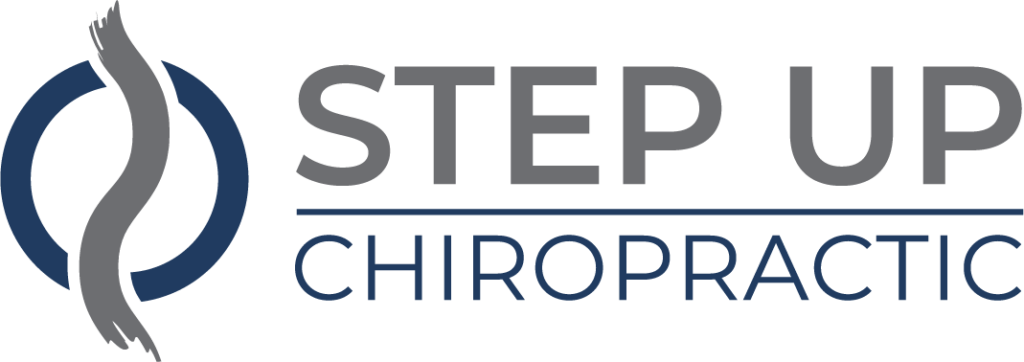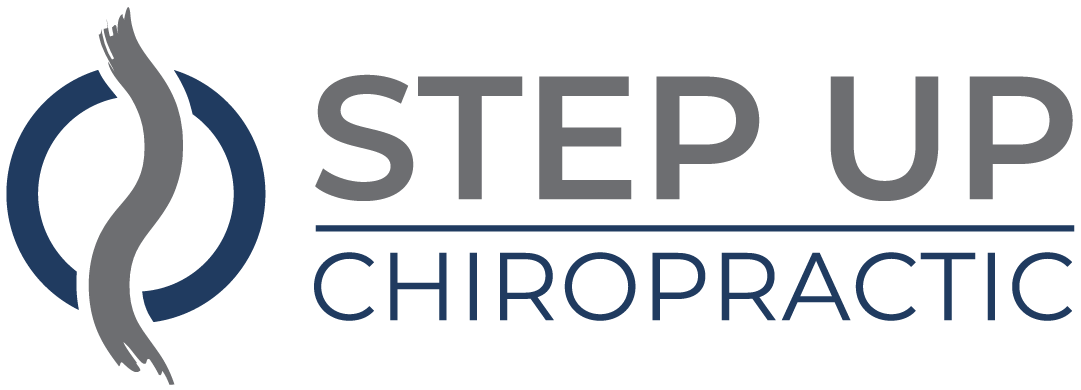If you're dealing with persistent back pain, you might wonder if lasting relief is truly achievable. It's easy to feel overwhelmed by the myriad of treatment options available, from traditional therapies to alternative methods, each promising a solution. You may have tried a few strategies already, but have you considered how an all-encompassing approach that combines lifestyle changes and professional guidance could make a difference? Understanding the nuances of your pain can be the key to finding a path forward, but what exactly does that path look like?
Understanding Back Pain
Back pain affects millions of people worldwide, and understanding its causes is fundamental for effective relief. When you experience back pain, it's more than just discomfort; it can hinder your daily activities and overall quality of life. You might feel a sharp, shooting pain or a dull ache, and recognizing the difference in these sensations can help you address the issue more effectively.
Your spine consists of various components, including bones, muscles, and nerves, all of which play an essential role in your back's health. It's important to grasp how these elements work together to support your body. If you're aware of the mechanics behind your spine, you can make informed decisions about your lifestyle and care routines.
Additionally, consider the impact of posture on your back health. Poor posture can lead to muscle strain and discomfort, so it's important to pay attention to how you sit and stand throughout the day. Incorporating ergonomic furniture and practicing good posture can notably reduce strain on your back.
Another factor to keep in mind is the significance of regular exercise. Engaging in strength-building and flexibility-enhancing activities can help maintain a strong support system for your spine. You don't need to become a fitness expert; just starting with simple stretches or low-impact exercises can make a difference.
Common Causes of Back Pain
Many factors can lead to back pain, and identifying the common causes is essential for finding relief. One of the most frequent culprits is poor posture. If you spend long hours hunched over a desk or slouched on the couch, your spine can suffer.
Pay attention to how you sit and stand; making adjustments can greatly improve your comfort.
Another common cause is muscle strains or sprains. Lifting heavy objects incorrectly or engaging in sudden, awkward movements can lead to injuries that leave you in pain.
Remember to always lift with your legs and not your back to avoid these issues.
Age also plays a considerable role in back pain. As you get older, your muscles and ligaments can weaken, and conditions like arthritis or degenerative disc disease may develop.
These changes can lead to discomfort and a decreased range of motion.
Additionally, lifestyle factors like obesity can contribute to back pain. Extra weight puts additional strain on your spine, which can exacerbate existing conditions.
Regular exercise and maintaining a healthy weight can help alleviate this pressure.
Lastly, emotional stress can manifest as physical pain. Anxiety and tension can cause you to tighten your muscles, leading to back pain.
Incorporating stress-relief techniques, such as meditation or yoga, can help ease this tension.
Traditional Treatment Options
When it comes to managing back pain, traditional treatment options can offer significant relief.
You'll find that medication, physical therapy, and chiropractic adjustments each play an essential role in your recovery.
Let's explore how these approaches can help you regain comfort and mobility.
Medication and Pain Relief
Finding effective relief from back pain often involves traditional medication options that target inflammation and discomfort. Over-the-counter nonsteroidal anti-inflammatory drugs (NSAIDs) like ibuprofen and naproxen can help reduce pain and swelling.
You might find that these medications are a quick fix for mild to moderate pain, allowing you to resume daily activities.
If your pain persists or is more severe, your doctor may prescribe stronger pain relievers, such as muscle relaxants or opioids.
However, opioids come with risks of dependency, so it's essential to use them carefully and under medical supervision.
Additionally, corticosteroids can be injected directly into the affected area to provide relief from inflammation.
Physical Therapy Benefits
Physical therapy can help you tackle back pain by addressing the underlying causes and improving your overall mobility. When you work with a licensed physical therapist, they'll assess your condition and create a personalized treatment plan tailored to your needs.
This plan often includes targeted exercises designed to strengthen the muscles that support your spine, increasing your stability and reducing pain. You'll also learn proper body mechanics and posture techniques, which can prevent future injuries.
Stretching exercises can enhance your flexibility, making daily activities easier and less painful. Additionally, physical therapists may use modalities like heat, ice, or electrical stimulation to alleviate discomfort and promote healing.
As you progress, your therapist will adjust your program to guarantee you're continually challenged, which helps you build endurance and resilience. One of the significant benefits of physical therapy is that it empowers you to take charge of your recovery.
Chiropractic Adjustments Explained
Chiropractic adjustments offer a hands-on approach to back pain relief by focusing on the alignment of your spine and the overall function of your nervous system.
When you visit a chiropractor, they'll assess your posture, mobility, and any areas of discomfort. Using controlled, sudden force, they'll manipulate your joints, primarily the spine, to restore proper alignment.
These adjustments can improve your range of motion and reduce pain by alleviating pressure on nerves and muscles. You might feel immediate relief after an adjustment, but it's common for some individuals to experience soreness for a day or two afterward.
Chiropractors often tailor treatment plans based on your specific needs, which may include a series of adjustments over several weeks. They might also incorporate other therapies, such as massage or exercises, to enhance the benefits of the adjustments.
While chiropractic care can be effective for many, it's important to consult with your healthcare provider first, especially if you have underlying health conditions.
Alternative Therapies Explored
When it comes to alleviating back pain, many people are turning to alternative therapies that offer a fresh perspective on healing. You might find options like acupuncture, massage therapy, and yoga particularly appealing. Each of these therapies targets pain relief through different mechanisms, allowing you to explore what works best for you.
Acupuncture, for instance, involves inserting thin needles into specific points on your body. This practice aims to stimulate your body's natural pain relief systems. Many who've tried it report significant reductions in back pain.
If needles aren't your thing, massage therapy can be a great alternative. By easing muscle tension and improving circulation, it can help alleviate discomfort and promote relaxation.
Yoga is another powerful tool in your back pain relief arsenal. It combines gentle stretches with mindful breathing techniques, helping you improve flexibility and strengthen your core muscles. Regular practice can lead to better posture and reduced tension in your back, making it a holistic approach to pain management.
Herbal remedies and dietary supplements might also offer relief, although it's essential to consult a healthcare professional before trying these. Some people find relief with turmeric or ginger, known for their anti-inflammatory properties.
Ultimately, the key is to be open to trying different therapies. You may discover that a combination of these alternatives, tailored to your individual needs, can provide the lasting relief you've been searching for.
The Role of Physical Therapy
Effective back pain relief often hinges on the expertise of a skilled therapist. When you work with a physical therapist, you gain access to personalized treatment plans designed specifically for your needs. They assess your condition, identify the root causes of your pain, and develop a strategy to alleviate discomfort and restore movement.
In therapy sessions, you'll engage in targeted exercises that strengthen your back and core muscles. These exercises can improve flexibility and stability, reducing the likelihood of future injuries. Your therapist will guide you through each movement, ensuring you use proper form to maximize effectiveness and minimize strain.
Manual therapy is another key component of physical therapy. Your therapist may use hands-on techniques to manipulate and mobilize your spine and surrounding muscles. This can help reduce pain, improve circulation, and enhance overall function.
Additionally, your therapist will teach you about body mechanics and posture. Understanding how to lift, sit, and stand properly can prevent further issues and facilitate long-term relief. They may also introduce modalities like heat, ice, or electrical stimulation to complement your treatment, targeting pain and inflammation directly.
Ultimately, working with a physical therapist empowers you to take an active role in your recovery. By focusing on functional improvements and pain management, you can move towards a healthier, more active lifestyle.
With commitment and guidance, you can achieve significant progress and find lasting relief from back pain.
Lifestyle Changes for Relief
To manage back pain effectively, making some lifestyle changes can be vital.
You can start by adjusting your workspace for better ergonomics, incorporating regular physical activity into your routine, and practicing mindfulness for stress management.
These adjustments not only support your back but also enhance your overall well-being.
Ergonomic Workspace Adjustments
Creating an ergonomic workspace can greatly reduce back pain and improve your overall comfort during long hours of sitting.
Start by adjusting your chair to make certain your feet rest flat on the floor, with your knees at a 90-degree angle. If your chair lacks lumbar support, consider using a cushion or a rolled towel to support your lower back.
Next, position your computer monitor at eye level, about an arm's length away. This helps you maintain a neutral neck position and reduces strain on your back. If you use a laptop, consider investing in a laptop stand or an external keyboard to achieve the right height.
Your desk should also be at a comfortable height. When typing, your elbows should remain close to your body and bent at a 90-degree angle.
Don't forget to keep frequently used items within arm's reach to avoid awkward twisting and stretching.
Lastly, take regular breaks to stand, stretch, or walk around. These simple adjustments can make a big difference in your comfort and help alleviate back pain over time.
Prioritizing your workspace's ergonomics is a key step toward lasting relief.
Regular Physical Activity
Sitting for long periods, even in an ergonomic setup, can still lead to back pain if you don't incorporate movement into your routine. Regular physical activity is vital for maintaining a healthy back and reducing discomfort. Aim for at least 30 minutes of moderate exercise most days of the week. This doesn't have to be intense; simple activities like walking, swimming, or cycling can make a significant difference.
Strengthening your core muscles is essential, too. Exercises that target your abdomen, hips, and lower back can help support your spine better. Try adding planks, bridges, or pelvic tilts into your routine.
Stretching is equally important. Incorporate stretches that focus on your back, hips, and legs to improve flexibility and alleviate tension.
Don't forget to take breaks throughout your day. If you work at a desk, set a timer to remind yourself to stand, stretch, or take a short walk every hour. These small movements can prevent stiffness and reduce the risk of pain.
Mindfulness and Stress Management
Mindfulness and stress management play an essential role in alleviating back pain. When you're stressed, your body tenses up, which can exacerbate discomfort. By incorporating mindfulness practices into your daily routine, you can help reduce this tension and promote relaxation. Start with simple techniques like meditation or deep breathing exercises. Even just a few minutes of focused breathing can center your mind and ease physical strain.
Additionally, consider engaging in activities that bring you joy and relaxation. Whether it's yoga, tai chi, or simply taking a walk in nature, these practices help manage stress and improve your overall well-being. They also encourage better posture and flexibility, which are vital for back health.
You might also want to keep a journal to track your stress triggers and how they relate to your back pain. By recognizing patterns, you can develop strategies to cope better.
When to Seek Professional Help
Knowing when to seek professional help for your back pain can be essential in avoiding further complications. If your pain persists for more than a few weeks or worsens despite home treatment, it's time to consult a healthcare professional. Early intervention can prevent the development of chronic issues and help you regain mobility sooner.
You should also seek help if you experience pain after a fall, injury, or accident. Sudden, intense pain can indicate a serious condition requiring immediate attention. Additionally, if your pain radiates down your legs, causes numbness, or affects your ability to walk, don't hesitate to reach out to a specialist.
Pay attention to accompanying symptoms as well. If you notice unexplained weight loss, fever, or bowel and bladder control issues, these could signal a more severe health problem that necessitates prompt medical evaluation. Ignoring these signs can lead to worsening conditions.
If you've already tried over-the-counter pain relievers, physical therapy, or home remedies without relief, seeking professional help is essential. A healthcare provider can conduct a thorough assessment, possibly including imaging tests, to determine the underlying cause of your pain.
Long-Term Management Strategies
To effectively manage back pain in the long term, it's crucial to adopt a multifaceted approach. Start by incorporating regular physical activity into your routine. Activities like walking, swimming, or yoga can strengthen your back and improve flexibility. Aim for at least 30 minutes of moderate exercise most days of the week.
Next, focus on maintaining good posture. Whether you're sitting at a desk or lifting objects, proper alignment can greatly reduce strain on your back. Consider ergonomic furniture or devices that support your posture throughout the day.
Don't underestimate the power of weight management. Carrying excess weight puts additional pressure on your spine, which can exacerbate pain. A balanced diet and regular exercise can help you achieve and maintain a healthy weight.
Additionally, consider incorporating stress management techniques into your life. Stress can lead to muscle tension and worsen back pain. Techniques like mindfulness, meditation, or deep-breathing exercises can help you stay relaxed and more aware of your body.
Finally, keep communication open with your healthcare provider. Regular check-ins can help you track your progress and adjust your management strategies as needed. They may suggest physical therapy, alternative treatments, or medications if necessary.
Conclusion
In your journey to find lasting relief from back pain, remember that a multifaceted approach is key. By combining traditional treatments with alternative therapies, along with making lifestyle changes, you can tackle the root causes of your discomfort. Stay active, practice mindfulness, and don't hesitate to seek professional help when needed. With dedication and the right strategies, you can manage your back pain effectively and improve your overall well-being for the long run.




